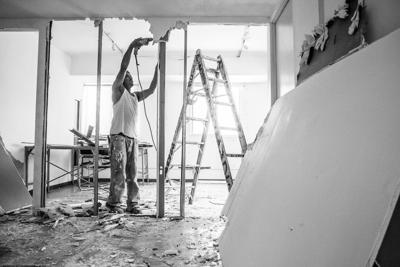
Drywall, sometimes referred to as plasterboard or gypsum board in the UK, is an essential part of modern construction. With its ability to offer seamless walls and ceilings, as well as easy repairs, it's no wonder it's become a favored choice for homeowners and professionals alike. If you're new to the world of drywall, this guide will walk you through its basics and how you can begin to implement it in your projects, including using specialized panels like BAC-MWS drywall panels for specific applications.
1. What Is Drywall?
Drywall is a panel made from gypsum plaster pressed between two thick sheets of paper. These panels are used to create walls and ceilings in buildings. One of the primary reasons drywall is so popular is its quick installation process compared to traditional plastering methods.
2. Benefits of Drywall
There are numerous benefits to using drywall:
Quick Installation: As mentioned, one of the top advantages of drywall is its speedy installation. Once the panels are in place, joint tape and joint compound are used to seal the seams between panels.
Cost-Effective: Drywall systems are generally more affordable than traditional plaster walls.
Insulation: The drywall has soundproofing capabilities. Special types of drywall panels can also offer fire resistance.
Flexibility: If you decide to remodel or make changes in the future, drywall can be easily adjusted or repaired.
3. Tools and Materials Needed
If you're planning to work with drywall, you'll require a specific set of tools and materials. Here's a basic list:
Drywall Panels: These come in various sizes, so choose based on your needs.
Joint Compound: This is used to seal the seams between panels.
Joint Tape: This helps reinforce and hide the seams.
Drywall Screws: To secure the drywall panels to the studs.
Tools: T-square, drywall saw, screw gun, utility knife, and sanding tools.
4. Implementation Process
Let's break down the basic steps:
Measure and Cut: Begin by measuring the area where you wish to install the drywall. Then, use a T-square and utility knife to score and cut the drywall panels to the appropriate size.
Installation: Secure the drywall panels onto the studs using drywall screws. Remember, the screws should be at least 16 inches apart.
Seaming: Apply joint compound to the seams between the drywall panels. Place the joint tape over this, pressing it into the compound. Apply another layer of joint compound over the tape. Allow this to dry completely.
Sanding: Once dry, you can sand the joint compound to ensure a smooth finish. This will prepare the wall for painting or wallpapering.
5. Advanced Techniques and Solutions
While the basic drywall installation process is quite straightforward, there are advanced techniques and products that can elevate the quality of your work. For example, the ADA Fastfix solution can provide more refined finishes and ease the process even further for beginners. Researching and incorporating these advancements can help ensure the longevity and quality of your drywall projects.
6. Drywall Maintenance and Repair
One of the benefits of drywall is its ease of repair. If there's damage, such as a hole or crack:
Clean the Area: Remove any loose debris or dust.
Patch: Use a patching compound or a drywall repair kit. Fill the hole or crack and ensure it's level with the rest of the wall.
Sand and Paint: Once the compound is dry, sand it smooth and then paint it over to match the rest of the wall.
In conclusion, drywall systems have revolutionized the construction industry, providing efficient and cost-effective solutions for walls and ceilings. For beginners, understanding the basics of drywall and its implementation can be the key to undertaking successful renovation projects or even new constructions. With the right tools, techniques, and a bit of practice, you'll soon become proficient in the art of drywall installation.



(0) comments
We welcome your comments
Log In
Post a comment as Guest
Keep it Clean. Please avoid obscene, vulgar, lewd, racist or sexually-oriented language.
PLEASE TURN OFF YOUR CAPS LOCK.
Don't Threaten. Threats of harming another person will not be tolerated.
Be Truthful. Don't knowingly lie about anyone or anything.
Be Nice. No racism, sexism or any sort of -ism that is degrading to another person.
Be Proactive. Use the 'Report' link on each comment to let us know of abusive posts.
Share with Us. We'd love to hear eyewitness accounts, the history behind an article.